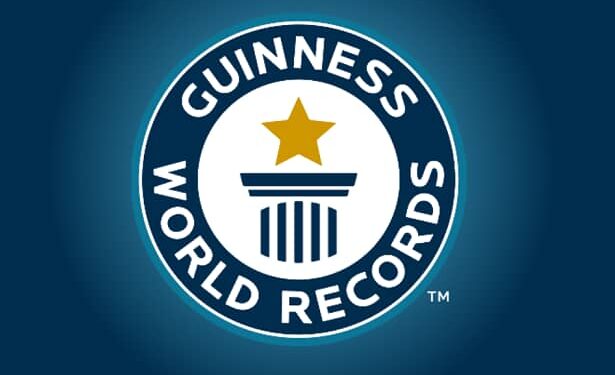The Guinness World Record (GWR) has become the new wave of challenges—everyone wants a shot at it. And honestly, it’s inspiring to see people push boundaries for recognition, influence, and personal fulfillment.
After remarkable attempts like Hilda Baci’s largest pot of jollof rice and Oluwaseyi Anifowose’s largest teachers’ conference, more people have been coming forward to make their own mark. That’s bold and commendable—but before you jump on the next record attempt, there are key things you need to know.
1. APPLICATION
—Before you can attempt a Guinness World Record, you must first register on the official GWR website.
—Applying for a new record comes with a non-refundable fee, while applying for an existing record is free.
—However, paying doesn’t guarantee approval. Your idea could still be rejected if it’s too similar to an existing one or lacks a clear skill element.
—Once you apply, approval typically takes about 12 weeks—unless you opt for the priority application service, which shortens the waiting time (for an extra fee).
2. DUE PROCESS
There are no shortcuts—follow every instruction carefully. Once your application is accepted, you’ll receive a document called “Guide to Your Evidence.”
This guide outlines all you’ll need to successfully validate your attempt, such as:
—Quality videos and photographs
—Two independent witnesses not related to you
—Professional validations and log sheets
—An official cover letter and sometimes professional certifications
Missing any of these can lead to disqualification, no matter how great your performance is.
3. SUPPORT SYSTEM
Attempting a world record isn’t cheap—it requires strong financial and moral support.
You’ll likely spend on:
-–Venue rental
—Logistics and feeding
—Payment for witnesses
—-Professional video and photography
These can cost hundreds of thousands or even millions of naira. That’s why having sponsors, family support, or crowdfunding is very helpful.
4. COMMON MISTAKES TO AVOID
Many fail not because they didn’t try hard, but because of avoidable errors like:
—Technical issues (e.g., faulty timers)
—Non-professional or biased witnesses
—Poor video or photo quality
—Document manipulation or missing record
The Guinness team validates attempts strictly based on authenticity, so every detail must be transparent and genuine.
5. WAITING PERIOD & OFFICIAL DECLARATION
After your attempt, all evidence must be submitted for review, which can take up to 3 months. You can also pay for faster verification if you want a quicker response.
Once approved, you’ll receive an official GWR certificate and your name will be added to their records. You’ll also have access to purchase official Guinness merchandise.
CONCLUSION
The Guinness World Record is more than fame—it’s a celebration of determination, endurance, and creativity.
To everyone who has succeeded, congratulations!
To those who tried but didn’t make it, failure is not final—it’s part of the process. Learn, rise again, and make the world proud.
And to every dreamer out there—the sky is your limit.
Go break a leg and make history!









































































 EduTimes Africa, a product of Education Times Africa, is a magazine publication that aims to lend its support to close the yawning gap in Africa's educational development.
EduTimes Africa, a product of Education Times Africa, is a magazine publication that aims to lend its support to close the yawning gap in Africa's educational development.

